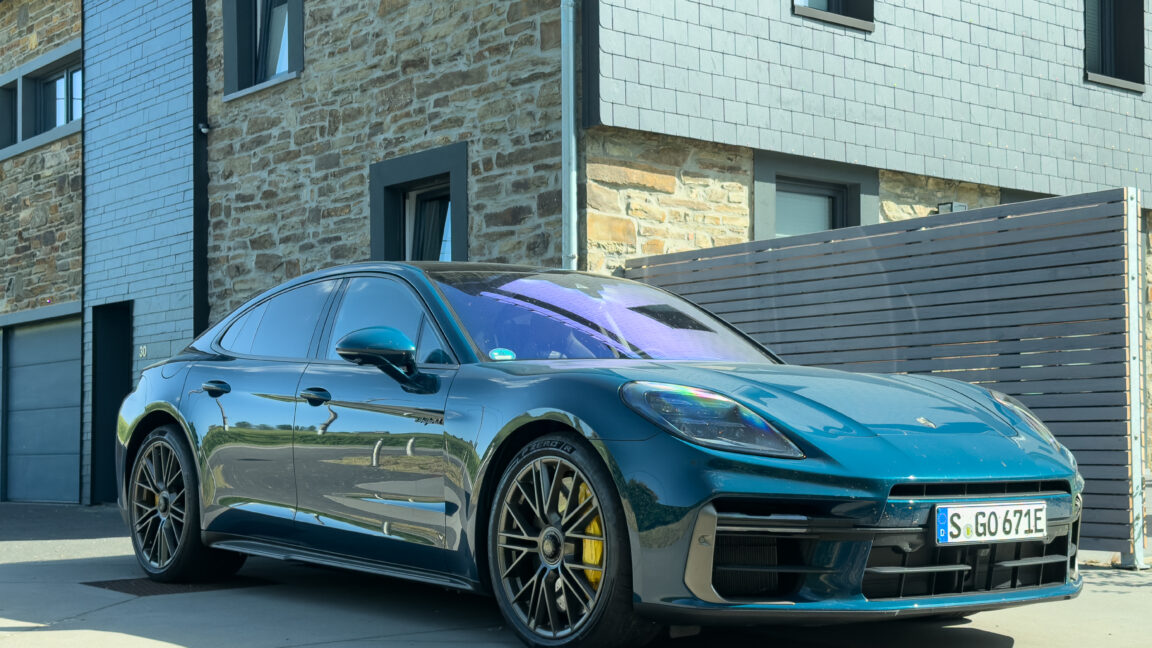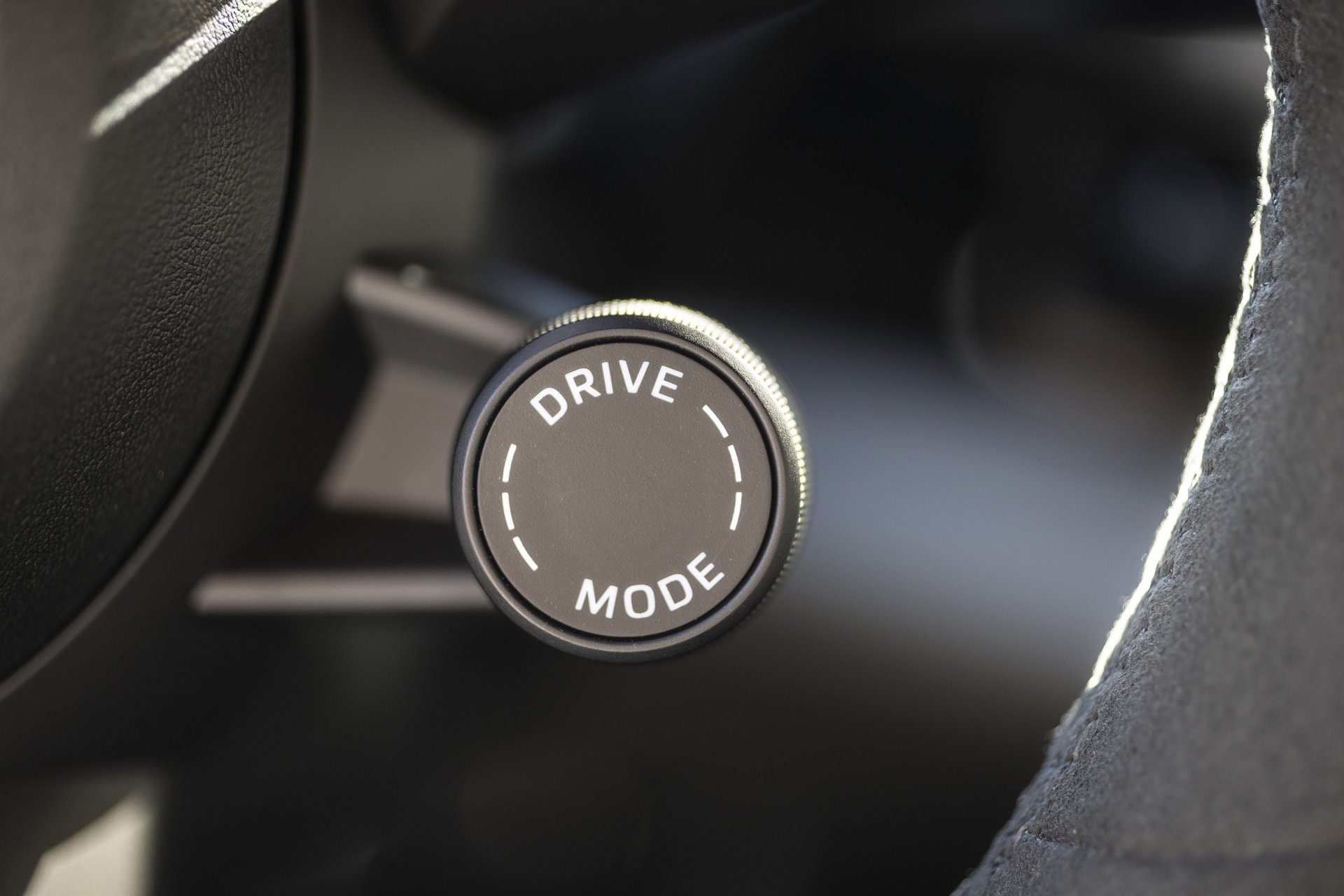
Credit: Jonathan Gitlin
REIDEN, Germany—There is a lot to be said for testing a car on the roads it was developed on. A Kei car, for example, makes more sense in downtown Tokyo than on one of Nashville's arterial highways, surrounded by construction trucks. Likewise the German supersedans. For decades, an arms race has been conducted between rival engineers in Munich, Ingolstadt, Stuttgart, and Zuffenhausen, each trying to best the others and build the ultimate four-door, four-wheel Autobahn crusher, fit for the fattest fat-cat captains of industry. The Panamera Turbo S E-Hybrid is Porsche's entry into this heavyweight bout.
In most of the world, the horsepower war has little relevance. Huge engine outputs, short acceleration times, and ridiculous top speeds that result from a casual indifference to fitting a speed limiter are at best of interest to the bench racers and are otherwise academic. Not so in Germany. After inventing the motorway in 1932, the country declined to impose speed limits on some sections, a practice it maintains as long as there's daylight and the weather is good. And drivers there make use of that privilege—in the fast lane, at least.
Seen in this context, the $239,000 Panamera Turbo S starts making more sense. It's the most powerful Panamera to date, combining a (fruity-sounding) 591 hp (441 kW) 4.0 L V8 that has been reworked compared to the version you might find under the hood of the last version. New monoscroll turbochargers and a higher peak combustion chamber pressure help warm up the catalytic converters quicker, and instead of cylinder deactivation at low load, the engine can change how much and how long it opens its intake valves, shortening the travel and duration under those conditions.
The V8 works with an electric motor that's integrated into the housing of the car's transmission, which in this case is an eight-speed dual clutch gearbox. The motor can deploy up to 187 hp (140 kW) and 331 ft-lb (450 Nm) and can regenerate up to 88 kW to the 25.9 kWh plug-in hybrid battery, which is capable of up to 56 miles (91 km) of range, at least under European driving conditions. Plugged into an 11 kW AC charger, expect a little more than 2.5 hours to recharge the battery. There's also an E-charge mode to use on the go, which takes spare power from the engine and sends it to the battery, and in Sport and Sport+ modes, the car will do this automatically, aiming for a 20- and 30-percent state of charge, respectively.
Combined power and torque is 771 hp (575 kW) and 738 lb-ft (1,000 Nm), with a 2.9-second 0–62 mph (100 km/h) time and a top speed of 202 mph (325 km/h).
A recent unrelated trip to Germany afforded the opportunity to test a couple of cars from Porsche that had yet to make their way to our home press fleet. One of them was the uber-Panamera.
Autobahn storming
I've been giving this some consideration, and I think Porsche's approach to user interfaces and drive modes is one of the best in the industry. Turning a dial that juts off the lower spoke on the steering wheel switches you through a pure EV mode, then normal, Sport, and Sport+. That makes it a lot easier to toggle between different setups than in some of the alternatives, which might require tapping a touchscreen or hitting a button on the center console. In pure EV mode, it's smooth thanks to all that torque, if not exactly rapid; with a curb weight of 5,300 lbs (2,400 kg), this is no lightweight RS variant—it's full fat.

This remains one of the better ways to switch drive modes in a car.
Credit: Porsche
Being able to twist the little steering wheel dial and instantly cut the V8's rumble as you approach a 50 or 30 km/h sign in a village is child's play, and being in EV mode helps keep to within those limits (the Porsche press office is very good about passing along any German speeding tickets—thankfully, I avoided that this time). The EU also mandates electronic speed limit warnings now, and the Panamera Turbo S presents this information via holographic speed limit signs projected onto the heads-up display, which was extremely helpful in both Germany and Belgium.
The Panamera is fitted with the latest generation of Active Ride, which uses two-valve dampers and single-chamber air springs, powered by the car's 400 V high-voltage system. In Normal mode, you can turn on an active comfort setting, which uses the active suspension to counteract body movements under acceleration, braking, and cornering. You can tell it to lean into the corners, lift the nose upon acceleration, raise the tail under braking, or do all three.
From the driver's seat, at anything less than a quite gentle pace, having the nose lift under acceleration and then sink under braking remains quite strange, no matter how much time I spend with that option enabled. But anecdotally, with all the active ride comfort settings turned on, my passenger was able to sleep undisturbed for a drive from the Ardennes to Frankfurt Airport.
Sport is a well-judged setting for back roads. There's good steering weight with some degree of feedback and plenty of grip from the front tires. Rear-wheel steering aids the Panamera Turbo S's agility, turning against the direction of the fronts at low speed for an effectively shorter wheelbase. It's not as fun as something like a 911—the size and curb weight never disappear—but one of those "miles of curves ahead" signs will make you smile if you encounter one behind the wheel.
On the autobahn, Sport+ lowers the ride height and takes some camber off the wheels for better straight-line performance. As the 130 sign gives way to that delightful white circle with the black diagonal lines denoting an end to the speed limit, it takes only a little flex of your right foot on the accelerator to push the Panamera forward. 125 mph (200 km/h) proved to be a comfortable cruising speed given the road and traffic conditions, with some short stretches a little north of that. At triple-digit cruising speeds, a decent amount of wind noise was generated around the driver's A pillar, but the car was stable and easy to keep on track.
Did the British supply the electronics?
As delightful as the Panamera Turbo S was for criss-crossing west Germany or blatting around Malmedy and Spa in Belgium, it wasn't entirely friction-free to live with for a week. I'm prepared to chalk up the CarPlay issues to my Phone: Sometimes it would fail to pass turn-by-turn directions to the HUD and main instrument panel, although the directions remained active on the infotainment screen. The Porsche suffered a major freakout one morning, announcing multiple system failures and an instruction to take the car to the nearest dealership. As is now so often the case with these highly computerized cars, turning it off and letting it sit and contemplate that behavior for 10 minutes worked like a charm, with no warning lights illuminated and no error messages being displayed.
Those kinds of electronic gremlins are a pain in any car, but I can't imagine someone would be that delighted to see them after spending more than €230,000 ($270,000) on our test setup. Some of those options were probably unnecessary—I was hoping to stream some of the Spa 24-hour race to them, but this proved impossible, although possibly because the car's data hotspot was not activated. I was set to complain about the lack of massaging seats at this price point, too, until I checked the configurator—it's possible to add this to both front and rear seats, which is definitely an option I'd select were I spending this kind of money on a luxury sedan.
The closest competitor is probably the Mercedes AMG GT62 S four-door, which beats the Porsche in some specs and loses out in others. Since neither is a necessity, it probably comes down to which one you think looks better or which badge you prefer.

-
 C114 Communication Network
C114 Communication Network -
 Communication Home
Communication Home


